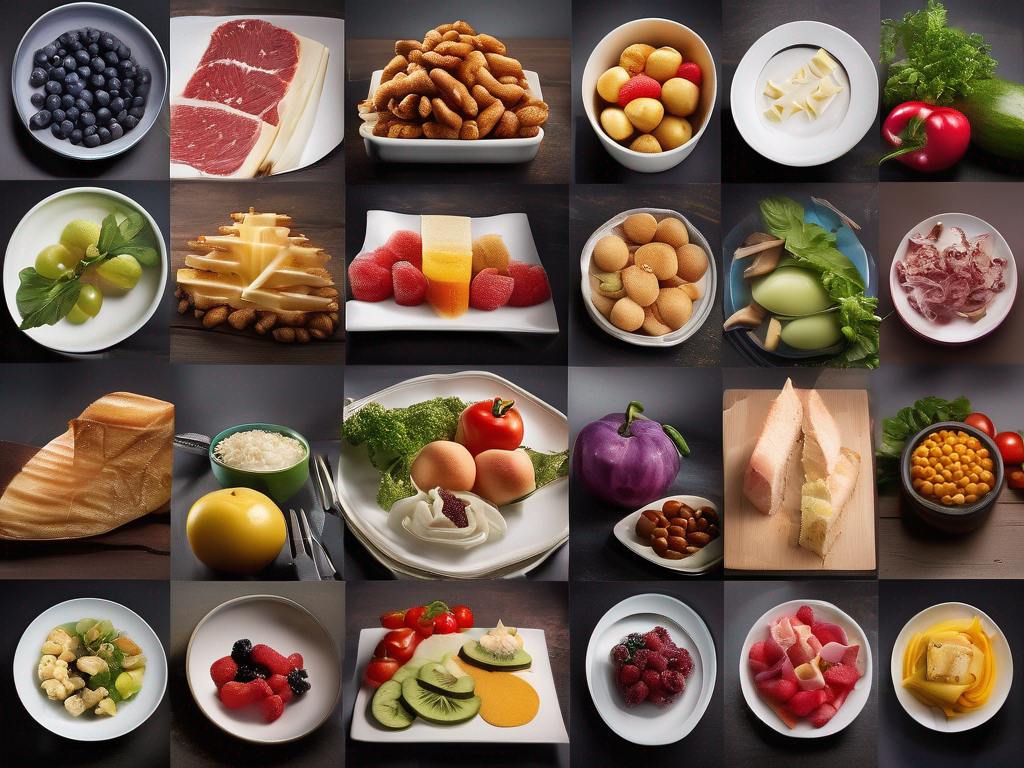
When to Discard Expired Chicken: Commercially Canned or in Vacuum Pouch Opened
Get Your Free Food Safety Cheat Sheet
30 most common foods with instant answers. Print it and stick it on your fridge—completely free!
When to Discard Expired Chicken: Commercially Canned or in Vacuum Pouch Opened
In the world of food safety, knowing when to discard expired chicken, whether it's commercially canned or in a vacuum pouch that has been opened, is crucial to preventing foodborne illnesses. Improper storage or consumption of expired chicken can lead to serious health risks. In this blog post, we will delve into the guidelines for discarding expired chicken and provide you with practical tips to ensure food safety in your kitchen.
Understanding Expiration Dates on Canned Chicken
Canned chicken is a convenient pantry staple that can be used in various recipes. However, it's essential to pay attention to the expiration dates on canned chicken to avoid any potential health hazards. Here are some key points to consider:
Checking the Expiration Date
- Look for the "best by" or "use by" date on the can of chicken.
- Do not consume canned chicken if it is past the expiration date.
Signs of Spoilage
- Check for any signs of spoilage, such as a foul odor, off-color appearance, or bulging can.
- If you notice any of these signs, discard the canned chicken immediately.
Storage Conditions
- Store canned chicken in a cool, dry place away from direct sunlight.
- Avoid storing canned chicken near sources of heat or humidity.
Guidelines for Discarding Expired Vacuum-Sealed Chicken
Vacuum-sealed chicken is a popular choice for preserving freshness and flavor. However, once the vacuum pouch has been opened, it's essential to follow specific guidelines for safe consumption:
Shelf Life of Vacuum-Sealed Chicken
- Vacuum-sealed chicken typically has a shorter shelf life once the packaging is opened.
- Check the label for storage instructions and recommended consumption timelines.
Refrigeration
- After opening the vacuum pouch, refrigerate the chicken promptly.
- Consume the chicken within the recommended timeframe to ensure freshness and safety.
Signs of Spoilage
- Inspect the chicken for any signs of spoilage, such as a slimy texture, off-putting odor, or discoloration.
- If the chicken shows any signs of spoilage, discard it immediately.
Practical Tips for Ensuring Food Safety
Ensuring food safety in your kitchen is paramount to protecting yourself and your family from foodborne illnesses. Here are some practical tips to help you maintain safe food storage practices:
Proper Storage
- Store canned chicken in a cool, dry place, such as a pantry or cupboard.
- Keep vacuum-sealed chicken refrigerated at all times.
- Avoid storing chicken near raw meat or other perishable items.
Labeling and Organization
- Clearly label canned and vacuum-sealed chicken with the purchase or opening date.
- Organize your pantry and refrigerator to ensure that older items are used before newer ones.
Temperature Control
- Keep your refrigerator temperature at 40°F (4°C) or below to prevent bacterial growth.
- Check the temperature of your refrigerator regularly to ensure it is functioning correctly.
Safe Handling Practices
- Wash your hands thoroughly before and after handling chicken.
- Use separate cutting boards and utensils for raw and cooked chicken to prevent cross-contamination.
- Cook chicken to the recommended internal temperature to kill any harmful bacteria.
Conclusion
Discarding expired chicken, whether it's commercially canned or in a vacuum pouch, is essential for maintaining food safety in your kitchen. By following the guidelines for checking expiration dates, monitoring signs of spoilage, and practicing safe food handling, you can reduce the risk of foodborne illnesses and ensure that your meals are safe to eat. Remember to store chicken properly, adhere to recommended storage timelines, and always prioritize food safety in your culinary endeavors. Stay informed, stay safe, and enjoy your meals with confidence!
Authoritative Food Safety References
These agencies and university labs inform every tip and health precaution we publish.
USDA FoodKeeper – Cold Storage Guidelines
Official refrigerator, freezer, and pantry timelines maintained by the U.S. Department of Agriculture.
Visit USDA FoodKeeperFDA Produce Safety Rule & Grower Guidance
Field-to-fridge handling practices that prevent contamination of fruits, vegetables, and leafy greens.
Visit FDA Produce SafetyCDC Foodborne Illness Prevention Hub
Surveillance-backed guidance on pathogens, symptoms, and steps to reduce foodborne illness risk.
Visit CDC Food SafetyUC Davis Postharvest Technology Center
University research detailing optimal storage atmospheres for produce after harvest.
Visit UC Davis PostharvestPenn State Extension – Home Food Preservation & Safety
Peer-reviewed extension bulletins on safe canning, chilling, and reheating practices.
Visit Penn State ExtensionGet Your Free Food Safety Cheat Sheet
30 most common foods with instant answers. Print it and stick it on your fridge—completely free! Want more? Upgrade to the complete guide with 70+ foods.
Scan your food directly and get instant safety info using our AI-powered camera feature.